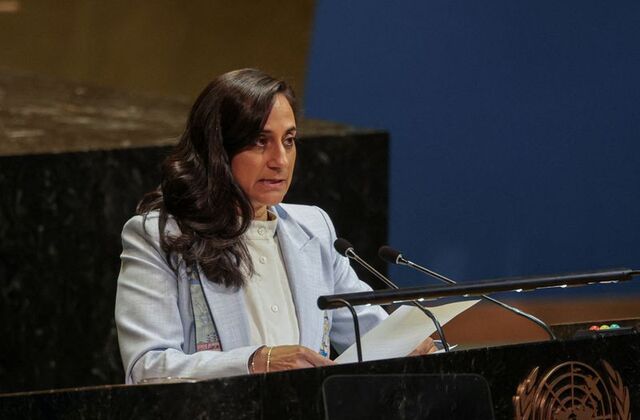After months of intense fighting and unimaginable human suffering, a historic ceasefire between Israel and Hamas has finally taken hold in Gaza. For the first time in years, the skies are free from the roar of airstrikes and the terror of rockets. The ceasefire, while a necessary reprieve, is not synonymous with peace.
- The Ceasefire Agreement: What It Means and What It Doesn’t
- Humanitarian Crisis: Gaza’s Unseen Wounds
- Reconstruction Challenges: A Mountain to Climb
- The Political Maze: Hamas, Israel, and the Palestinian Authority
- Regional and International Responses
- The Psychological and Social Rebuilding of Gaza
- The Elusive Quest for Lasting Peace
- Frequently Asked Question
- What triggered the most recent conflict in Gaza?
- Who brokered the ceasefire agreement?
- What are the main terms of the ceasefire?
- How severe is the damage in Gaza after the conflict?
- What role is the international community playing in Gaza’s reconstruction?
- Can this ceasefire lead to lasting peace between Israel and Hamas?
- What does the future look like for Gaza?
- Conclusion
Streets once littered with rubble and despair now echo with the cautious steps of families emerging from shelters. Yet, beneath this fragile calm lies an uncertain future — one fraught with political complexities, humanitarian challenges, and a monumental need for reconstruction.
True peace requires not only the cessation of hostilities but also the rebuilding of trust, infrastructure, and dignity. Gaza, long described as an “open-air prison,” faces the daunting task of reconstructing a society ravaged by war while navigating a political landscape rife with division and distrust.
More Read: Trump Praised as a ‘Colossus’ in Israel as Nation Celebrates Hostage Return
The Ceasefire Agreement: What It Means and What It Doesn’t
The ceasefire agreement, brokered through the joint efforts of Egypt, Qatar, and the United Nations, marks a significant diplomatic milestone. Both Israel and Hamas agreed to an immediate cessation of hostilities, with stipulations on the release of hostages, the easing of blockades.
And international monitoring of border crossings. While the truce brought a moment of relief, it remains tenuous. Similar agreements in the past — notably those in 2014, 2021, and 2023 — unraveled within weeks or months due to mutual distrust and unresolved grievances.
This particular ceasefire includes several key components:
- Immediate humanitarian access to Gaza for aid organizations.
- Gradual lifting of the blockade, contingent on security guarantees.
- Prisoner and hostage exchanges, including the return of civilians and soldiers held by both sides.
- International supervision to prevent smuggling of arms and to oversee reconstruction efforts.
Despite these provisions, both sides have expressed skepticism. Hamas insists that Israel must completely end its blockade for peace to hold, while Israel demands assurances that Gaza will not rearm.
The political stalemate underscores the fundamental issue: the ceasefire halts violence, but it does not address the root causes of conflict.
Humanitarian Crisis: Gaza’s Unseen Wounds
Even with the guns silent, the humanitarian situation in Gaza remains catastrophic. Months of bombardment have left neighborhoods in ruins, hospitals overwhelmed, and basic infrastructure crippled.
According to UN estimates, over 60% of Gaza’s housing stock has been damaged or destroyed, leaving hundreds of thousands homeless. Electricity remains scarce, clean water is limited, and medical supplies are dangerously low.
Thousands of families live amid the debris of their former homes, relying on international aid for survival. Children, who make up nearly half of Gaza’s population, are among the hardest hit. UNICEF reports a surge in trauma cases, with countless children suffering from nightmares, anxiety.
And post-traumatic stress. Schools have been converted into shelters, disrupting education and deepening generational instability. Humanitarian organizations have launched massive campaigns to deliver food, medicine, and psychological support, but logistical barriers persist.
Border closures, limited fuel supplies, and bureaucratic delays have hampered the delivery of aid. “The war may be over, but our suffering continues,” said Amal, a mother of four in northern Gaza. “We have peace on paper, but not in our lives.”
Reconstruction Challenges: A Mountain to Climb
Rebuilding Gaza is not simply a matter of pouring concrete and laying bricks. It requires addressing the deeper political and economic restrictions that have strangled the region for decades.
The estimated cost of reconstruction exceeds $20 billion, covering homes, hospitals, schools, roads, and utilities. International donors, including the European Union, the United States, and Gulf nations, have pledged financial support. However, past experiences reveal that pledges do not always translate into tangible progress.
Reconstruction efforts following previous wars in Gaza were hindered by:
- Restrictions on building materials imposed by Israel due to security concerns.
- Corruption and mismanagement within local administrative bodies.
- Political division between Hamas (which governs Gaza) and the Palestinian Authority (which controls the West Bank).
- Periodic resumption of conflict, which destroyed progress already made.
The new ceasefire agreement includes a mechanism to ensure transparency in aid distribution, supervised by international agencies. However, unless political reconciliation accompanies these measures, Gaza’s reconstruction may remain superficial — rebuilding structures without rebuilding stability.
The Political Maze: Hamas, Israel, and the Palestinian Authority
Peace in Gaza cannot be achieved in isolation. It is tied to the broader Israeli-Palestinian conflict, one of the world’s most entrenched political disputes. Hamas, designated as a terrorist organization by Israel and many Western countries, remains the de facto governing power in Gaza.
While its leaders have welcomed the ceasefire, they insist it must lead to the full lifting of the blockade and recognition of Palestinian sovereignty. Israel, on the other hand, views Hamas as an existential threat.
Successive Israeli governments have refused to engage directly with Hamas, preferring to work through intermediaries. Israel demands long-term demilitarization of Gaza as a precondition for any permanent peace arrangement.
The Palestinian Authority (PA), led by President Mahmoud Abbas, faces its own legitimacy crisis. Its influence in Gaza has waned since Hamas took control in 2007. For a unified Palestinian front to emerge, reconciliation between Hamas and the PA is essential — yet decades of mistrust have made that goal elusive.
International mediators, including Egypt, Qatar, and the United Nations, are now pushing for a transitional unity government to oversee Gaza’s reconstruction. Whether Hamas and the PA can find common ground remains uncertain, but without political unity, Gaza’s recovery will be perpetually vulnerable.
Regional and International Responses
The ceasefire has drawn mixed reactions across the region and beyond.
- Egypt has emerged once again as the primary mediator, leveraging its ties with both Israel and Hamas to maintain stability along its border.
- Qatar has pledged billions in aid and reconstruction funds, reinforcing its role as a key humanitarian player.
- The United States has expressed cautious optimism, emphasizing the need for “durable peace” and “accountability for aid distribution.”
- The European Union has called for renewed peace talks and a two-state solution, echoing long-standing international consensus.
- Arab nations, including Jordan, Saudi Arabia, and the UAE, have issued statements of solidarity with the Palestinian people, while urging Hamas to moderate its stance.
Despite these declarations, international attention tends to wane once immediate violence subsides. Without sustained diplomatic engagement, Gaza risks returning to the same cycle of destruction and fragile truces.
The Psychological and Social Rebuilding of Gaza
Beyond the physical damage, Gaza’s emotional and psychological wounds run deep. Generations have grown up knowing little but war, displacement, and deprivation. Mental health professionals warn that the trauma will shape the future of Gaza’s youth for decades.
Psychologists working with children describe widespread emotional numbness and hopelessness. “They draw pictures of destruction — planes, fire, death,” said Dr. Hanan Al-Atrash, a child therapist in Gaza City. “It’s not normal for a ten-year-old to speak so calmly about war.”
Rebuilding Gaza therefore means more than repairing infrastructure. It requires restoring human dignity, reviving hope, and rebuilding community trust. Local NGOs, mosques, and cultural centers have begun initiatives focusing on art therapy, education, and social resilience.
Women, who bore much of the burden during the conflict, are leading many of these efforts — organizing local food networks, rebuilding homes, and providing trauma support. Their role in Gaza’s recovery could be pivotal in shaping a more inclusive, resilient society.
The Elusive Quest for Lasting Peace
Peace in Gaza remains fragile because the broader conflict remains unresolved. The core issues — borders, settlements, refugees, and the status of Jerusalem — continue to divide Israelis and Palestinians.
The ceasefire offers an opportunity to reset, but it cannot replace political negotiation. For peace to endure, both sides must confront uncomfortable truths:
- Israel must recognize that sustainable security cannot be achieved through perpetual blockade.
- Palestinians must reconcile internal divisions and build accountable institutions.
- The international community must ensure that aid translates into empowerment, not dependency.
The alternative is a continuation of the tragic cycle that has defined Gaza’s recent history — war, truce, reconstruction, and renewed war.
Frequently Asked Question
What triggered the most recent conflict in Gaza?
The conflict erupted due to escalating tensions in Jerusalem and retaliatory rocket attacks between Hamas and Israel. It quickly intensified into full-scale warfare, resulting in widespread destruction and civilian casualties.
Who brokered the ceasefire agreement?
The ceasefire was mediated primarily by Egypt, with significant involvement from Qatar and the United Nations. Their coordinated diplomatic efforts helped bring both sides to the negotiating table.
What are the main terms of the ceasefire?
The agreement includes the cessation of hostilities, humanitarian aid access, prisoner exchanges, and gradual lifting of certain blockade restrictions — all under international supervision.
How severe is the damage in Gaza after the conflict?
Over 60% of Gaza’s infrastructure, including homes, schools, and hospitals, has been damaged or destroyed. Rebuilding efforts are estimated to cost over $20 billion and may take several years.
What role is the international community playing in Gaza’s reconstruction?
International donors, including the U.S., EU, and Gulf nations, have pledged aid for reconstruction. The UN is coordinating relief operations, while Egypt and Qatar are leading on-the-ground mediation and funding.
Can this ceasefire lead to lasting peace between Israel and Hamas?
While the ceasefire provides temporary relief, lasting peace will depend on addressing deeper political and territorial issues — including the blockade, governance of Gaza, and the broader Israeli-Palestinian conflict.
What does the future look like for Gaza?
Gaza’s future hinges on sustained international support, internal Palestinian unity, and a genuine political commitment to peace from both sides. The road is steep, but not impossible, if global and regional stakeholders remain engaged.
Conclusion
The people of Gaza stand at a crossroads between despair and determination. The ceasefire has offered a rare pause, a chance to rebuild and reimagine a future beyond conflict. But peace cannot thrive on broken promises or political expediency.
The path ahead is steep — marked by the challenges of reconstruction, political reconciliation, and the struggle for justice. Yet within the dust of Gaza’s ruins lies an enduring resilience. Families are rebuilding homes with salvaged bricks, teachers are reopening classrooms in tents, and doctors are treating patients with what little they have left.





